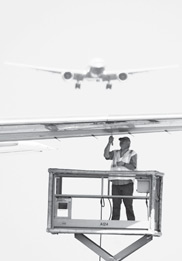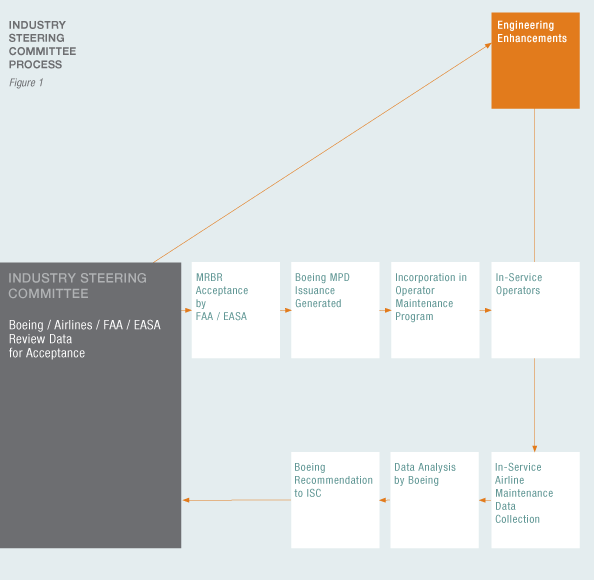
 |
Boeing regularly works with an Industry Steering Committee to improve the efficiency of the maintenance tasks that operators use to create their scheduled maintenance programs for their commercial airplane models. These improvements optimize the content and interval of maintenance tasks to maintain safety and reliability and achieve cost efficiencies. Improvements are based on Boeing analysis of in-service data collected from the worldwide fleet. All improvements are reviewed and approved through an industry process involving Boeing, operators, and regulatory agencies. |
| BOEING WORKS WITH THE INDUSTRY TO ENSURE THAT SCHEDULED MAINTENANCE PROGRAMS MEET THE HIGHEST STANDARDS. | by Brian McLoughlin, Maintenance Engineering Technical Services Manager, and Jane Beck, 777 ISC Co-Chair |
Over the decades, Boeing has worked closely with the aviation industry to develop robust processes that ensure scheduled maintenance programs adhere to the highest safety and operational reliability levels. In creating and updating its scheduled maintenance programs, Boeing uses a process as outlined in Federal Aviation Administration Advisory Circular 121-22A (Maintenance Review Board Procedures) that involves the establishment of an Industry Steering Committee (ISC), in-service data collection and analysis, and a recommendation from Boeing for each individual task under review.
INDUSTRY STEERING COMMITTEE
An ISC comprises operators, manufacturers, and regulators who follow the guidance outlined in Advisory Circular AC 121-22A to develop the scheduled maintenance program for an airplane model and the resulting Maintenance Review Board Report (MRBR). It is the function of the ISC, under the direction of a chairperson (an operator selected by its peer operators), to develop and establish policy for the development of the MRBR proposal and participate in the review and approval process of the ISC.
ISC meetings for all models, which are held on an as-needed basis, take place in Seattle, Wash., or Long Beach, Calif., and generally last one week. Meetings are open to all operators and typically cover a specific Boeing airplane model or defined set of models.
The airframe manufacturer serves as an ISC co-chairperson and has the duties of receiving in-service data to be analyzed for proposed MRBR changes, providing the ISC with sufficient technical data to base decisions on proposed changes, providing relevant training to the ISC as needed, and coordinating and participating in ISC and working group activities.
The Federal Aviation Agency (FAA) and European Aviation Safety Agency (EASA) have Maintenance Review Board (MRB) chairperson duties, which consist of inviting other regulatory authorities, in coordination with the manufacturer, to participate in the MRB process; reviewing and accepting or rejecting the policy and procedures used throughout the process; and providing final acceptance of the MRBR.
The ISC makes ongoing improvements to the scheduled maintenance program using the most current maintenance philosophy (see “History of Maintenance”, at the end of this article). These improvements not only maintain the inherent safety and reliability of the airplane but can also produce substantial savings for the operators. Any operator may become a representative voting member of an ISC.

